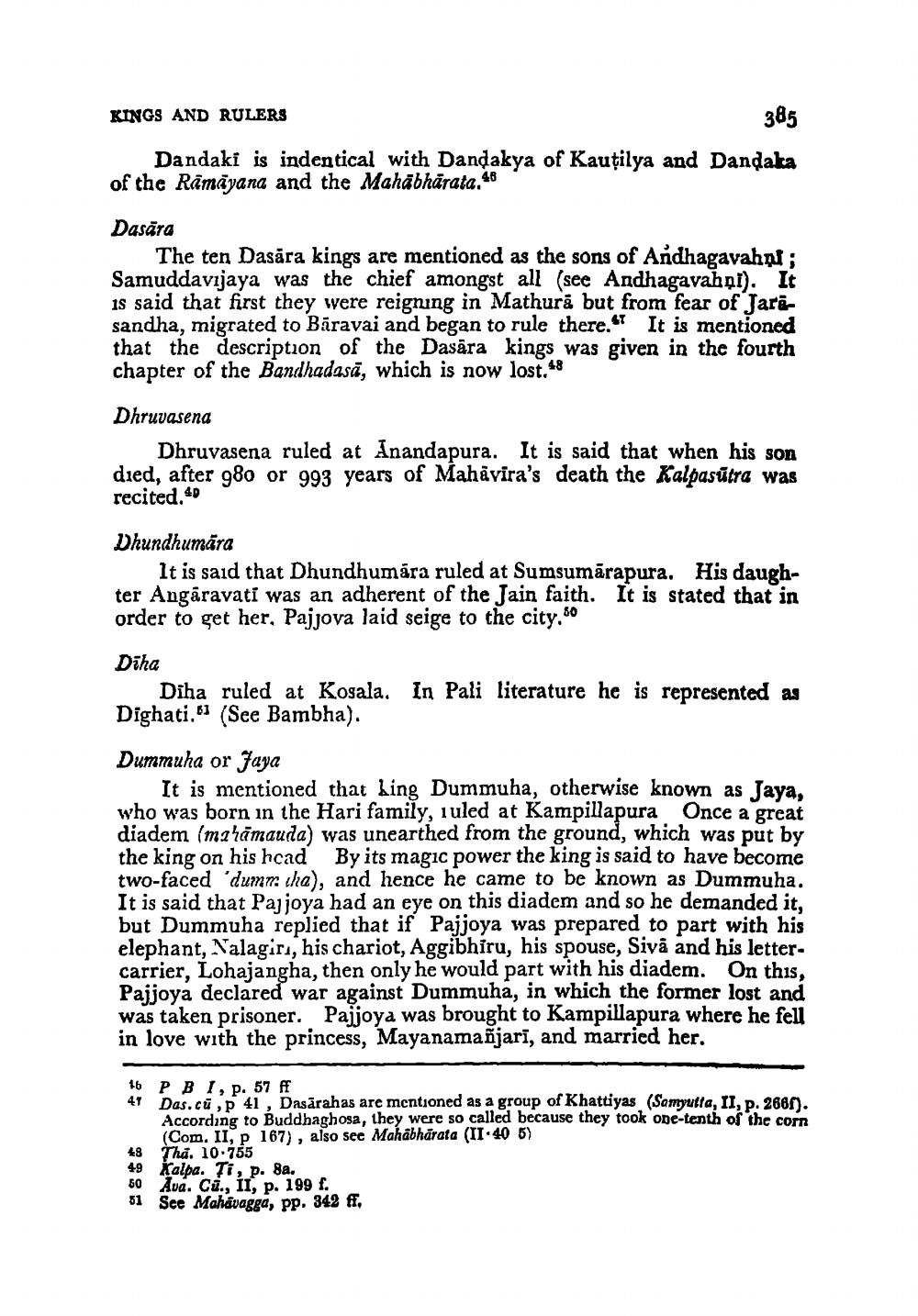________________
KINGS AND RULERS
385
Dandaki is indentical with Dandakya of Kautilya and Dandaka of the Rāmāyana and the Mahābhārata.48
Dasāra
The ten Dasāra kings are mentioned as the sons of Andhagavahni; Samuddavijaya was the chief amongst all (see Andhagavahni). It is said that first they were reigning in Mathură but from fear of Tarasandha, migrated to Bāravai and began to rule there. It is mentioned that the description of the Dasara kings was given in the fourth chapter of the Bandhadasā, which is now lost.48
Dhruvasena
Dhruvasena ruled at Anandapura. It is said that when his son died, after 980 or 993 years of Mahavira's death the Kalpasūtra was
recited. 4D
Dhundhumāra
It is said that Dhundhumára ruled at Sumsumārapura. His daughter Angäravati was an adherent of the Jain faith. It is stated that in order to get her, Pajjova laid seige to the city. 80
Diha
Diha ruled at Kosala. In Pali literature he is represented as Dighati." (See Bambha).
Dummuha or Jaya
It is mentioned that Ling Dummuha, otherwise known as Jaya, who was born in the Hari family, iuled at Kampillapura Once a great diadem (mahānauda) was unearthed from the ground, which was put by the king on his head By its magic power the king is said to have become two-faced 'dumm tha), and hence he came to be known as Dummuha. It is said that Pajjoya had an eye on this diadem and so he demanded it, but Dummuha replied that if Pajjoya was prepared to part with his elephant, Nalagir, his chariot, Aggibhiru, his spouse, Siva and his lettercarrier, Lohajangha, then only he would part with his diadem. On this, Pajjoya declared war against Dummuha, in which the former lost and was taken prisoner. Pajjoya was brought to Kampillapura where he fell in love with the princess, Mayanamañjarī, and married her.
16 PBI, p. 57 ff 41 Das.cü ,p 41, Dasārahas are mentioned as a group of Khattiyas (Samyutta, II, p. 2660.
According to Buddhaghosa, they were so called because they took one-tenth of the corn
(Com. II, p 167) , also see Mahabharata (II.40 5) 48 Tha. 10.755 49 Kolpa. Ti, p. 8a. 60 Ava. Ci., II, p. 199 f. 51 See Mahavagga, pp. 342 ff.




